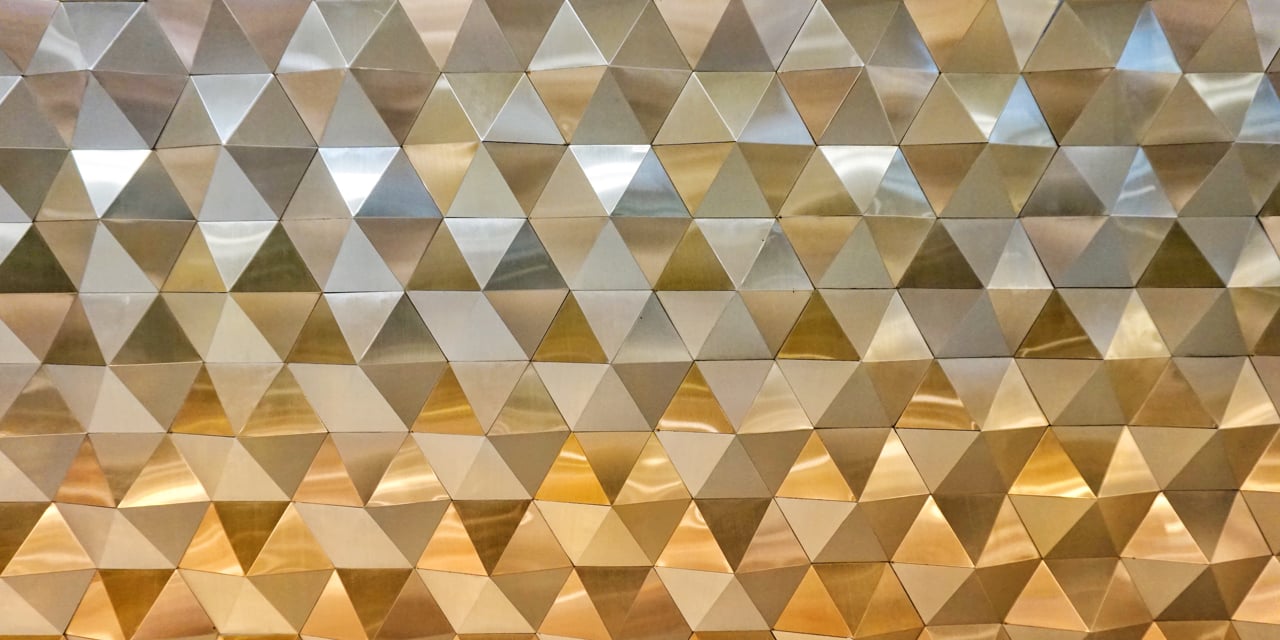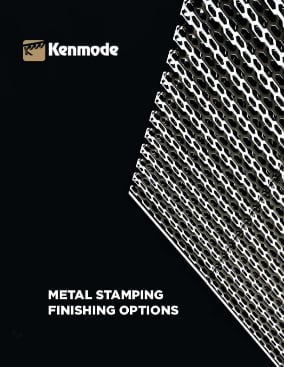When designing and producing precision metal stamped components, engineers and project managers representing the manufacturer, its suppliers, and the metal stamper should discuss the options for finishing the part to ensure optimal performance. Whether you need to inhibit corrosion, improve appearance, or smooth sharp edges, metal finishing is an important step in the manufacturing process that should be considered from the start.
Finishing options include:
- Powder Coating and E-Coating
- Plating
- Electropolishing
- Deburring
- Heat Treating
- Cleaning
Powder Coating and E-Coating
Coatings are applied to the surface of a part, with paint, powder, and metal coatings among the most common. Electro-coating or e-coating is often used as a primer for corrosion protection, while powder coating is added for aesthetic reasons. Some applications, particularly in the automotive industry, require both types of coating.Coating techniques can serve many valuable purposes:
- Increase corrosion resistance
- Improve the appearance of a part
- Serve as a primer coat to promote paint adhesion
- Increase wear resistance
- Enhance chemical resistance
- Increase wear resistance
- Increase chemical resistance
- Reduce or increase the effects of friction
Learn more: Powder Coating and E-Coating Improve Corrosion Resistance and Appearance of Metal Stampings
Plating
Many custom metal stampings require metal plating, ranging from large auto parts to miniature electronic components. Plating is primarily used to improve the appearance of a part, to inhibit corrosion, to improve electrical conductivity, and/or to extend product life.
Plating can be specified in varying thicknesses. Plating materials include precious metals such as gold and silver, and non-precious metals like zinc and cooper. The cost of the plating material can be a significant factor in the overall cost of the part. The stamping itself should be designed to minimize material waste and maximize performance, taking into consideration the type of plating required.
Plating can be performed at different stages of metal stamping production, depending on the part and its functions.
- Pre-plating plates the raw metal material before stamping and may be less expensive.
- Post-plating is performed after fabrication, often for parts that operate in harsh environments or for visual appeal.
- Spot-plating is used primarily with precious metals when only a small area of the stamped part requires plating.
The types of metal plating processes include:
-
Reel-to-reel plating
-
Barrel plating
-
Rack plating
-
Zinc or zinc nickel electroplating
-
Aluminum chromating
Learn more: How Metal Plating Enhances Stamped Parts
Electropolishing
Electropolishing removes the outer layer of metal and any contaminants by immersing the parts in a tank filled with a blended chemical electrolyte bath that is then subjected to an electrical current. Rack electropolishing, which is used for complex metal stampings with close tolerances, makes contact with each part. The more economical bulk electropolishing is used for small parts, such as fasteners and springs that do not require the same consistency in material removal.
Electropolishing is used to:
- Enhance the part’s appearance
- Prevent corrosion
- Debur minor flaws
- Improve fatigue life
- Perform ultra-cleaning
Learn more: The Benefits of Electropolishing for Your Precision Metal Stamped Part
Deburring
A burr is an edge or the small pieces of metal remaining on a part after stamping. Deburring is the process of removing the excess material. Although a relatively easy secondary operation, deburring is often a critical procedure for fit.
Common methods of deburring metal stamped parts:
- The bulk deburring processes are barrel and vibratory finishing, which either tumble or vibrate the parts in an abrasive media and a cleaning solution. Both barrel and vibratory finishing remove oil and other foreign contaminants, along with sharp edges and burrs.
- Electropolishing, which is a more expensive option used for micro-deburring of complex parts, removes surface metal, which can provide a mirror-like finish.
Learn more: Deburring Improves Performance and Appearance of Metal Stampings
Heat Treating
The process of heat treating involves heating and cooling metals, which changes their microstructure to bring out the physical and mechanical characteristics that make it more desirable.
Heat treatment allows metal stampers to use softer steel alloys to manufacture a more complex part and still achieve the metal strength required for unique applications. The temperature that the metal is heated to, and the rate of cooling after the heat treatment, impact the metal stamping's properties. The most common reasons that metals undergo heat treatment are to improve part strength, hardness, toughness, and corrosion resistance.
Two main types of heat treating:
- Quenching or hardening processes are performed in a furnace and use different media, such as oil, salt or gas, to make the part harder, more resistant to wear, and stronger, which may be followed by tempering.
- Annealing or softening processes heat and cool the part to make it more malleable and to reduce internal stress and brittleness.
Learn more: Heat Treating Techniques to Strengthen Metal Stampings
Cleaning
The metal stamping process leaves residues, such as lubricants, metal shavings, and dust, on the stamped parts, which could affect the part’s function. Various cleaning methods are available to remove the contaminants and improve the part’s appearance.
Metal stampers typically offer a range of cleaning services in-house, but they may call on other approved suppliers for highly specialized cleaning services. In some cases, more than one cleaning operation may be required, both after stamping and again after metal finishing to ensure its optimal function.
Cleaning methods for metal stampings:
- Degreasing: aqueous or vapor degreasing
- Passivation: citric acid, nitric acid
- In-line spray or immersion cleaning
- Rinsing followed by a rust inhibitor
- Electropolishing
- Deburring
- Sterilization
Learn more: Cleaning Metal Stampings is Critical to its Finish and Function
Evaluating Metal Finishing Options During DFM
Discussing the specifications and demands of your stamped part with your metal stamper early in the Design For Manufacturability (DFM) process can avoid unnecessary costs and scheduling delays when it comes to metal finishing. Quality precision metal stamping companies use both in-house resources and proven suppliers to provide specialized metal finishing operations. Working with experienced metal stamping engineers who are familiar with a wide range of finishing techniques can provide valuable insight and help you determine what finishing method is best for your end product.


